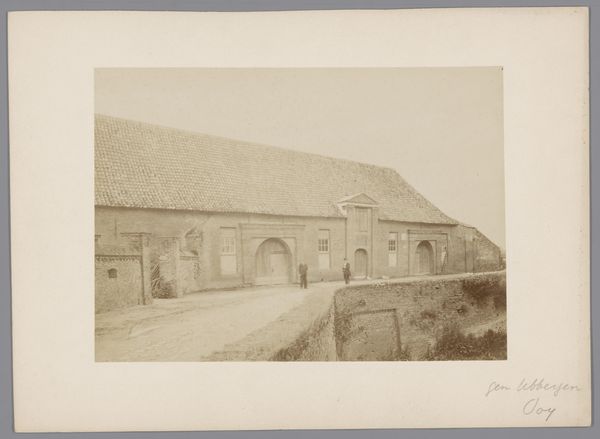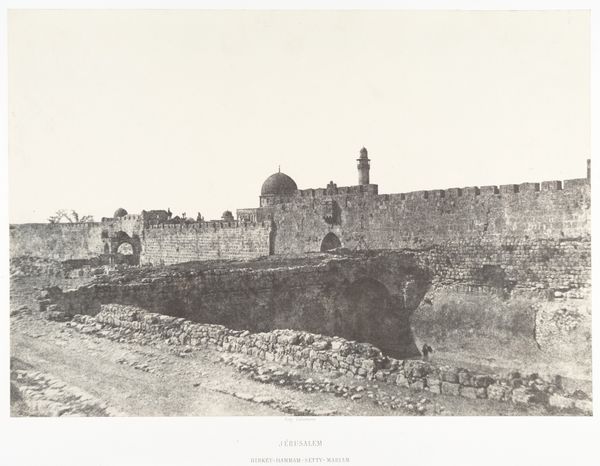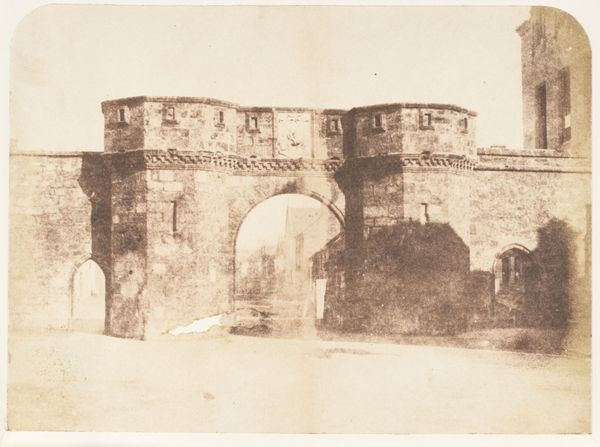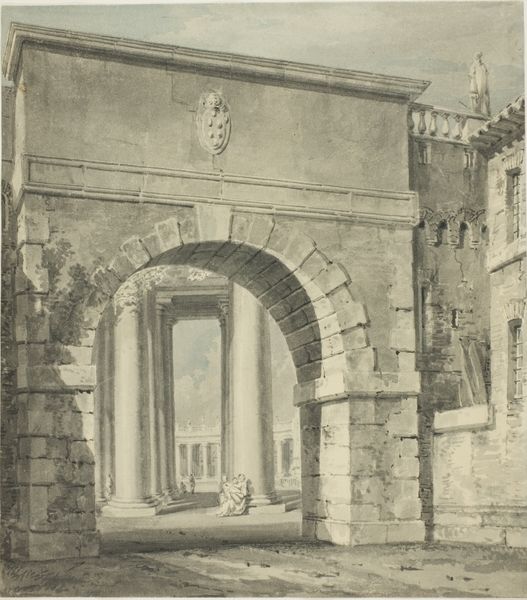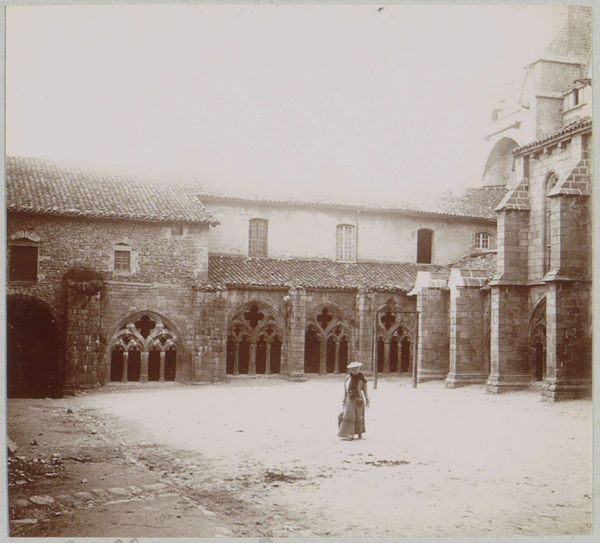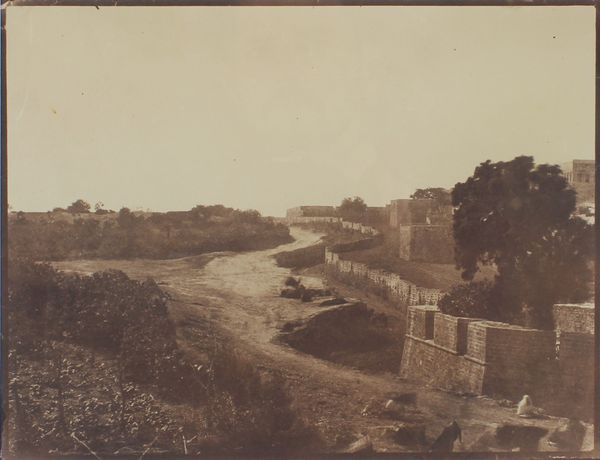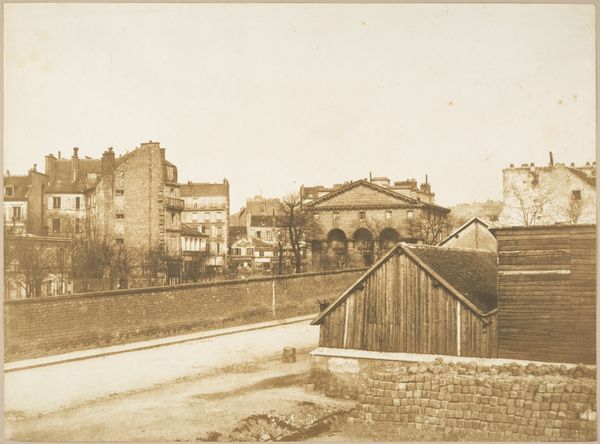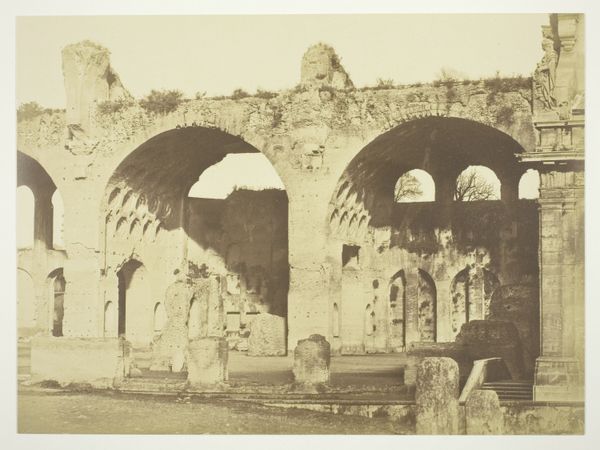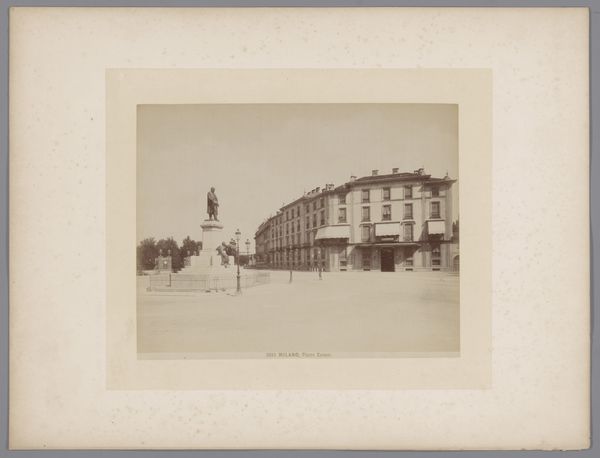
photography, gelatin-silver-print, architecture
#
landscape
#
outdoor photography
#
photography
#
historical photography
#
gelatin-silver-print
#
cityscape
#
islamic-art
#
architecture
Copyright: Public Domain
Curator: Let's delve into this stunning vista captured by Luigi Pesce in 1858: "Yran, Piazza a Isphaan", a gelatin-silver print. You can find this early example of photography at the Metropolitan Museum of Art. What springs to mind as you observe it? Editor: Well, right away, it feels otherworldly. The tones are so muted, like a sepia dream, and the architecture…it’s almost dissolving into the landscape. There’s a sense of ancient grandeur, yet also a quiet melancholy. Curator: Exactly! Pesce was working at a time when photography was still finding its feet as both documentation and artistic expression. This image allows us to engage with a pivotal moment in the visual representation of Islamic cities. Editor: The photographer's technical mastery is fascinating. Given the time, the way Pesce composed this view, balancing the geometry of the buildings with the natural backdrop...it’s rather sublime. You feel the weight of history. But I wonder what daily life was really like there back then, behind those grand facades. Curator: That’s a crucial question. Understanding the layers of power at play – from the architectural dominance to the social stratification implied by who occupies the space within—challenges us to read beyond the picturesque and into the complex political realities of 19th-century Iran. We must recognize this isn't a neutral landscape, but one marked by privilege and perhaps, resistance. Editor: True. And thinking about photography itself as a tool...who got to point the camera? What stories were left untold? This piece sparks questions of orientalism and representation of Middle Eastern places. What could be framed and understood depended entirely on the viewer's perspective, didn’t it? Still a debate to be had. Curator: Absolutely. It's why unpacking the image's creation within its socio-political context is essential. It stops us from simply consuming the aesthetic appeal and compels us to critically examine how such images shape our perceptions and perpetuate power imbalances. Editor: Beautifully put. It has been a stark reminder about how our lenses—literally and figuratively—color everything we see. Curator: Indeed. Every image offers a version of the truth, filtered through the perspectives of those involved. A constant interplay of observer and observed to keep in mind.
Comments
No comments
Be the first to comment and join the conversation on the ultimate creative platform.
